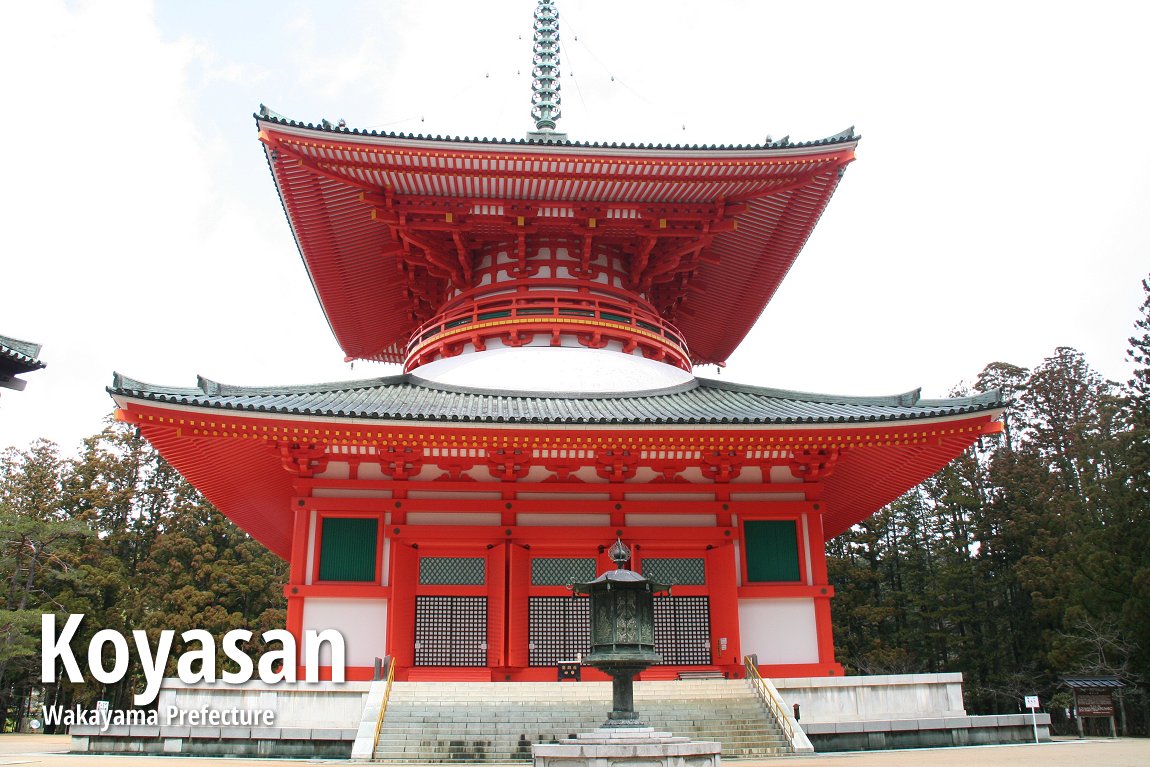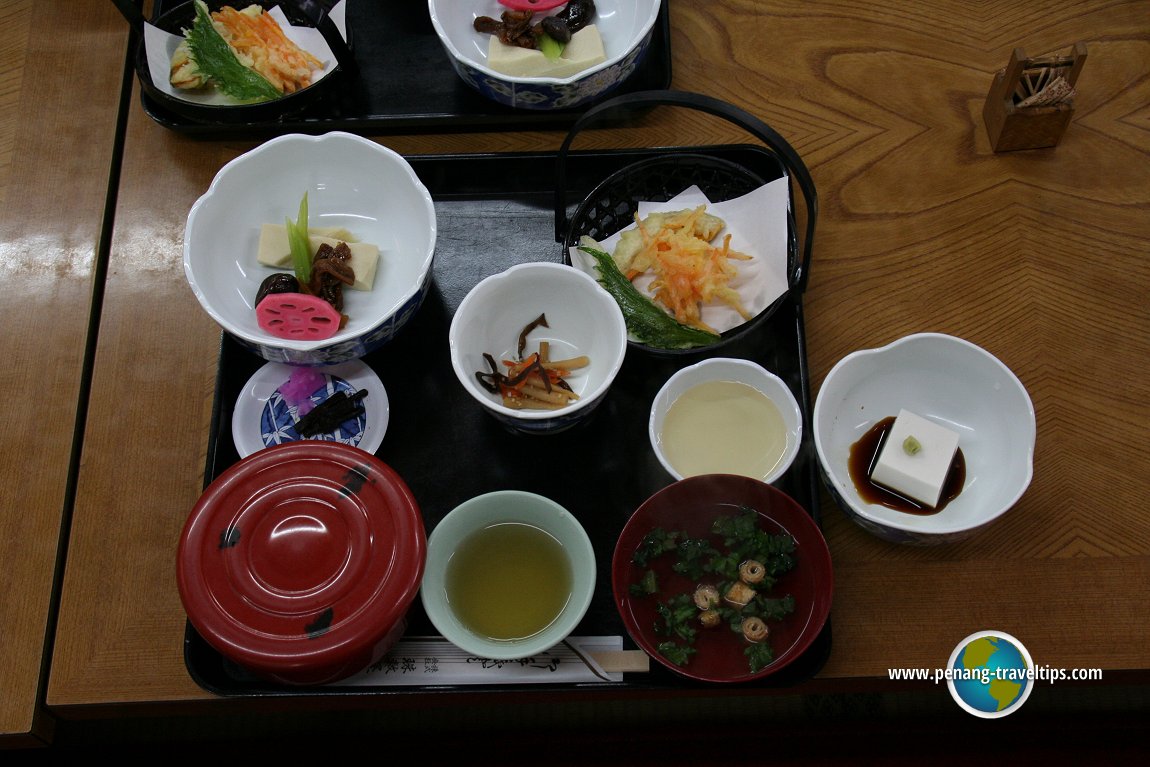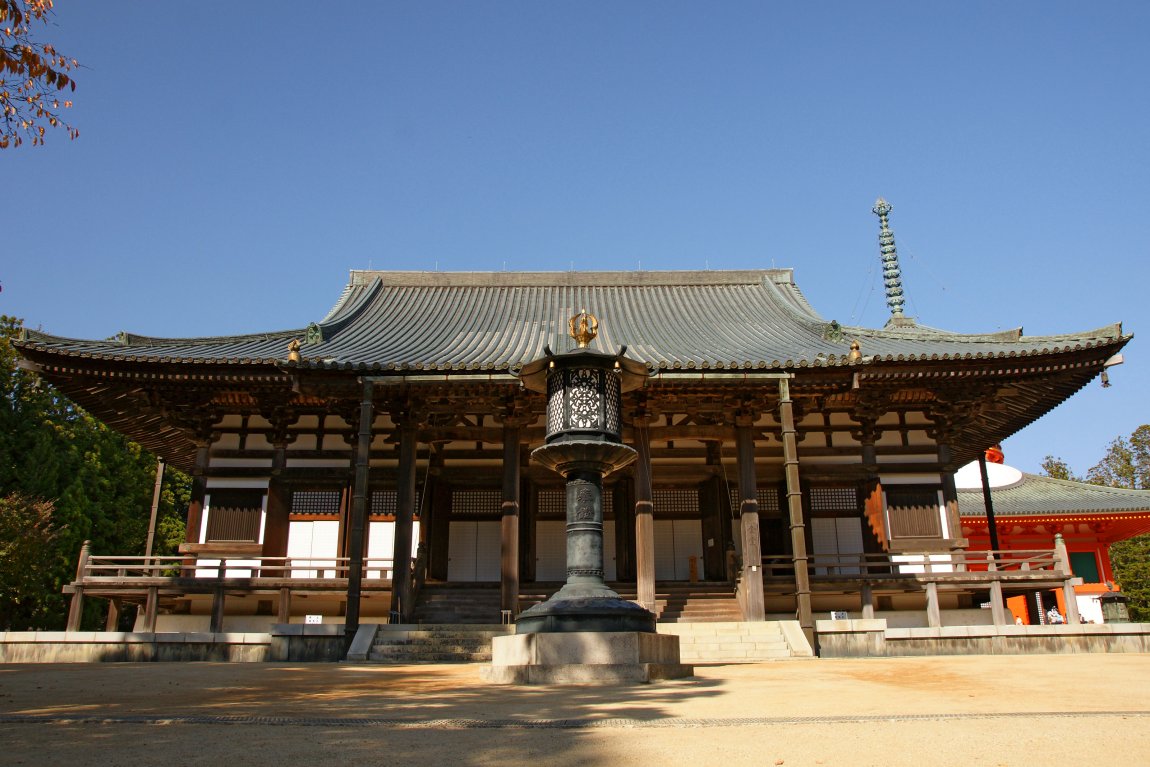 Koyasan (Japanese: 高野山), or Mount Koya, is the most venerated mountain for Japan's Shingon-Buddhist sect. Located in Wakayama Prefecture, Japan, was established by a monk named Kobo Daishi as a monastic retreat in AD 816.
Koyasan (Japanese: 高野山), or Mount Koya, is the most venerated mountain for Japan's Shingon-Buddhist sect. Located in Wakayama Prefecture, Japan, was established by a monk named Kobo Daishi as a monastic retreat in AD 816.Today Koyasan draws some one million local visitors every year. At one time it had as many as a thousand temples, but the number has been decimated by storms and fires, and now only 123 are still standing.
Visitors to Koyasan gets to sample the traditional vegetarian cuisine that is one of the wonderful experiences of the visit. These are served at the many restaurants and lodgings in Koyasan.
World Heritage Site Inscription Details
Location: N 33 50 13.0 E 135 46 35.0Inscription Year: 2004
Type of Site: Cultural
Inscription Criteria: II, III, IV, VI
Planning your trip to Koyasan
Take the train (Express train at ¥1610, 80 minutes; Ordinary Express at ¥1210, 90 minutes) of the Nankai Electric Railway at Namba Station in Osaka to Gokurakubashi, which is at the base of the Kii Mountain Range. From Gokurabashi, you take a cable car to the top of Mount Koya. The journey is just 5 minutes and the ticket is ¥360. From the cable car station, take the bus - usually timed to follow the arrival of the cable car - to Koyasan. There's a one-fare package at the Nankai ticket counter that includes the round-trip by train, plus cable-car, plus all-day bus pass. Daito, or the Great Stupa, of Koyasan (1 April 2008)
Daito, or the Great Stupa, of Koyasan (1 April 2008)
 Traditional vegetarian cuisine of Koyasan (1 April 2008)
Traditional vegetarian cuisine of Koyasan (1 April 2008)
 Danjogaran Temple Complex, Koyasan
Danjogaran Temple Complex, KoyasanSource: http://en.wikipedia.org/wiki/File:Danjogaran_Koyasan02s5s3200.jpg
Author: 663highland

Author: 663highland

Planning your travel within Koyasan
At Koyasan itself, there are trails for you to hike around and visit the many temples. Some of the main temples are located near the roadside, and are quite accessible from the village.Places of Interest in Koyasan
- Aizen-do
"Temple of Ragaraja," temple within the Danjogaran temple complex. - Daimon
"Great Gate," the traditional gateway to Koyasan. - Daito
"Great Stupa," a massive two-storey vermillion-and-white pagoda. - Danjogaran
A complex of wooden temples in Koyasan. - Fududo
"Acala Temple," oldest building in Koyasan, within the Danjogaran temple complex. - Kongobu-ji
Central monastery of Koyasan, built in 1592 by Toyotomi Hideyoshi. - Koya-shiro
A great bell at Danjogaran temple complex. - Kujaku-do
"Temple of Peacock," built by ex-Emperor Gotoba in AD 1200, with a statue of a peacock divinity. - Okuno-in
Necropolis of some 200,000 tombs, including the mausoleum to Kobo Daishi. - Reihokan
"Treasure House," now a museum with a display of some 5,000 paintings and statues. - Rokkaku Kyozo
Hexagonal depository of Buddhist scriptures. - Saito
"Western Stupa," built by Bishop Shinzen in AD 887. - Sammaido
"Temple of Meditation," site where poet-priest Saigyo performed religious meditation while staying in Koyasan from AD 1150 to 1183. - Shrines of the Divinities
Shrines dedicated to the goddess Nyu, the god Koya and other minor divinities. - Torodo
"Lantern Hall," a hall where 11,000 lanterns are kept burning day and night. - Toto
"Eastern Stupa," completed by ex-Experor Shirakawa in AD1127.
 Latest updates on Penang Travel Tips
Latest updates on Penang Travel Tips
 Map of Roads in Penang
Map of Roads in Penang
Looking for information on Penang? Use this Map of Roads in Penang to zoom in on information about Penang, brought to you road by road.About this website

Dear visitor, thank you so much for reading this page. My name is Timothy Tye and my hobby is to find out about places, write about them and share the information with you on this website. I have been writing this site since 5 January 2003. Originally (from 2003 until 2009, the site was called AsiaExplorers. I changed the name to Penang Travel Tips in 2009, even though I describe more than just Penang but everywhere I go (I often need to tell people that "Penang Travel Tips" is not just information about Penang, but information written in Penang), especially places in Malaysia and Singapore, and in all the years since 2003, I have described over 20,000 places.
While I try my best to provide you information as accurate as I can get it to be, I do apologize for any errors and for outdated information which I am unaware. Nevertheless, I hope that what I have described here will be useful to you.
To get to know me better, do follow me on Facebook!
Copyright © 2003-2025 Timothy Tye. All Rights Reserved.

 Go Back
Go Back